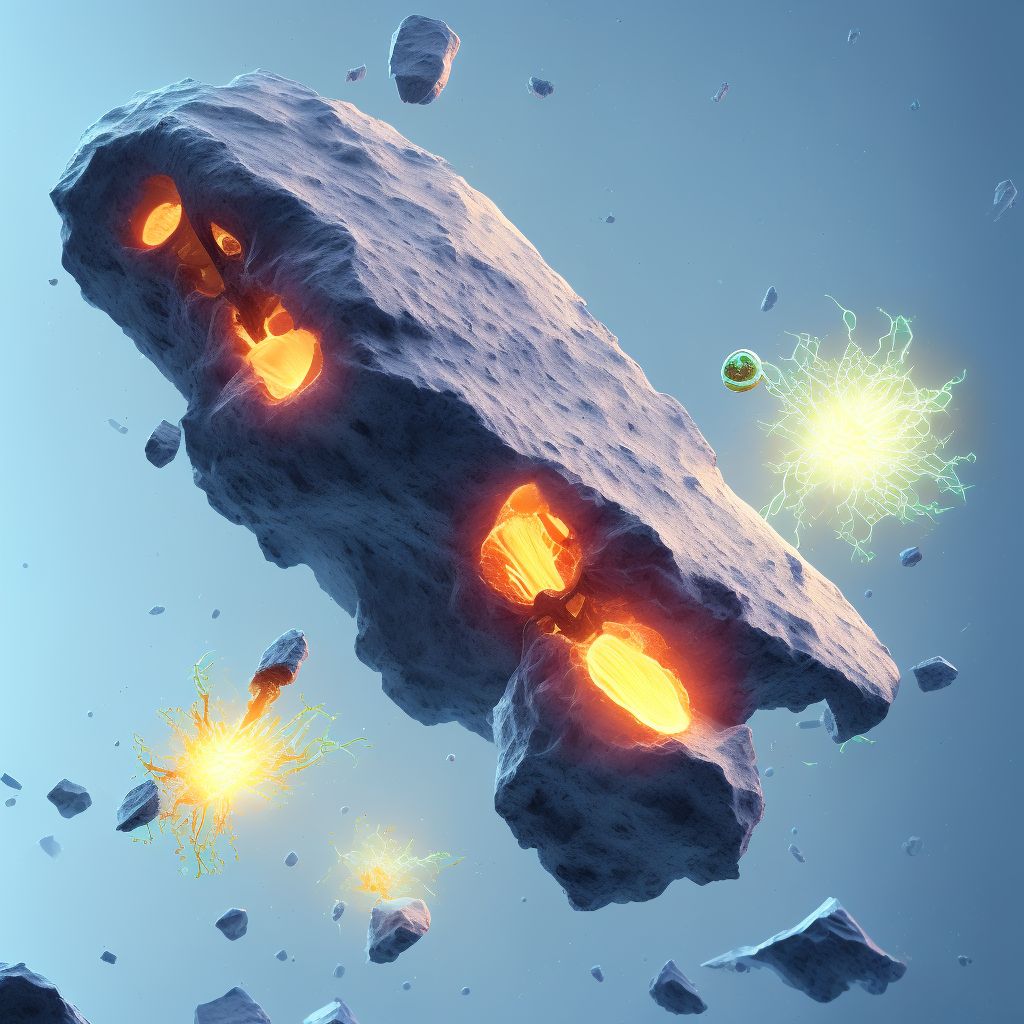
Nondisplaced comminuted fracture of shaft of unspecified tibia, subsequent encounter for open fracture type IIIA, IIIB, or IIIC with routine healing Save
ICD-10 code: S82.256F
Disease category: S82.256: Nondisplaced comminuted fracture of shaft of unspecified tibia
Nondisplaced Comminuted Fracture of Shaft of Unspecified Tibia: Understanding the Healing Process
A nondisplaced comminuted fracture of the shaft of the unspecified tibia can be a complex injury, requiring specialized medical attention and appropriate treatment to ensure proper healing. In this article, we will explore the subsequent encounter for open fracture types IIIA, IIIB, or IIIC, focusing on the routine healing process.
Upon diagnosis, the initial treatment may involve aligning the fractured bones and immobilizing the affected leg using a cast or splint. However, it is important to note that this article will not discuss specific treatment options for this type of fracture.
Once the initial treatment is completed, the routine healing process commences. During this period, the body's natural healing mechanisms work together to repair the fracture and restore the tibia's strength and function.
- Inflammation: Following the fracture, the body initiates an inflammatory response to remove any damaged tissues and pave the way for the healing process. This stage may involve swelling, redness, and pain around the fracture site.
- Soft Callus Formation: As the inflammation subsides, the body starts producing a soft callus. This callus is primarily composed of collagen and serves as a bridge between the broken bone fragments. It provides stability and support to aid in the healing process.
- Hard Callus Formation: Over time, the soft callus transforms into a hard callus. The hard callus is composed of minerals, such as calcium, and provides even greater stability to the healing fracture.
- Remodeling: The final stage of healing involves the remodeling of the hard callus. This process can take several months or even years. During remodeling, the body gradually replaces the callus with new bone tissue, restoring the tibia's original strength and structure.
It is crucial to follow your healthcare provider's instructions during the routine healing process. This may include regular check-ups, physical therapy, and lifestyle modifications to promote optimal healing.
In conclusion, a nondisplaced comminuted fracture of the shaft of the unspecified tibia requires careful management to ensure routine healing. Understanding the stages of healing can provide insight into the complex process that occurs within the body. Remember to consult with a healthcare professional for personalized advice regarding the treatment and recovery of this type of fracture.
Treatment of Nondisplaced comminuted fracture of shaft of unspecified tibia, subsequent encounter for open fracture type IIIA, IIIB, or IIIC with routine healing:
Treatment Options for Nondisplaced Comminuted Fracture of Shaft of Unspecified Tibia
A nondisplaced comminuted fracture of the shaft of the unspecified tibia can be a serious injury that requires prompt and appropriate treatment. This type of fracture occurs when the bone is broken into several pieces, but the fragments remain in their normal position. In this article, we will disc...
To see full information about treatment please Sign up or Log in